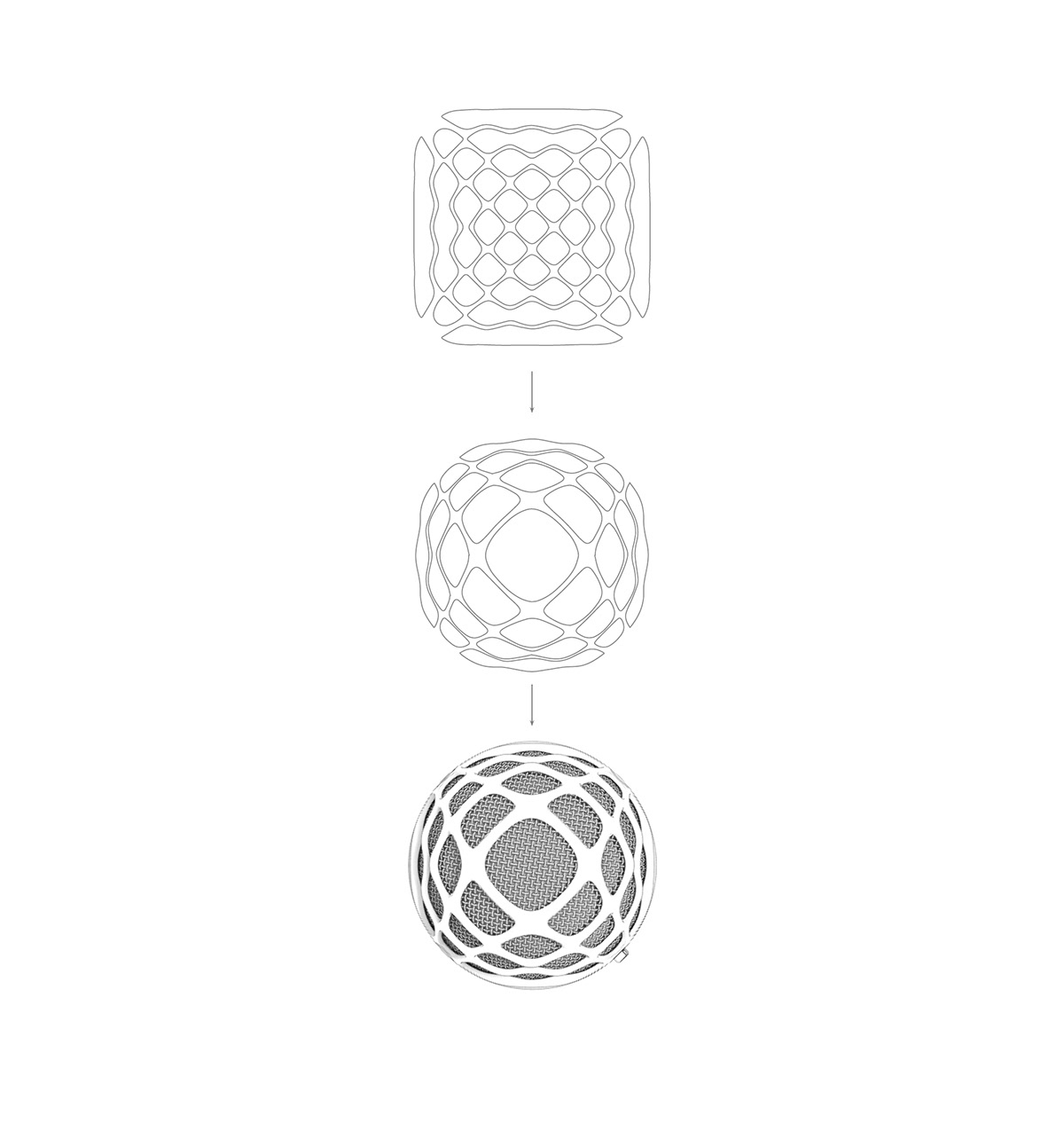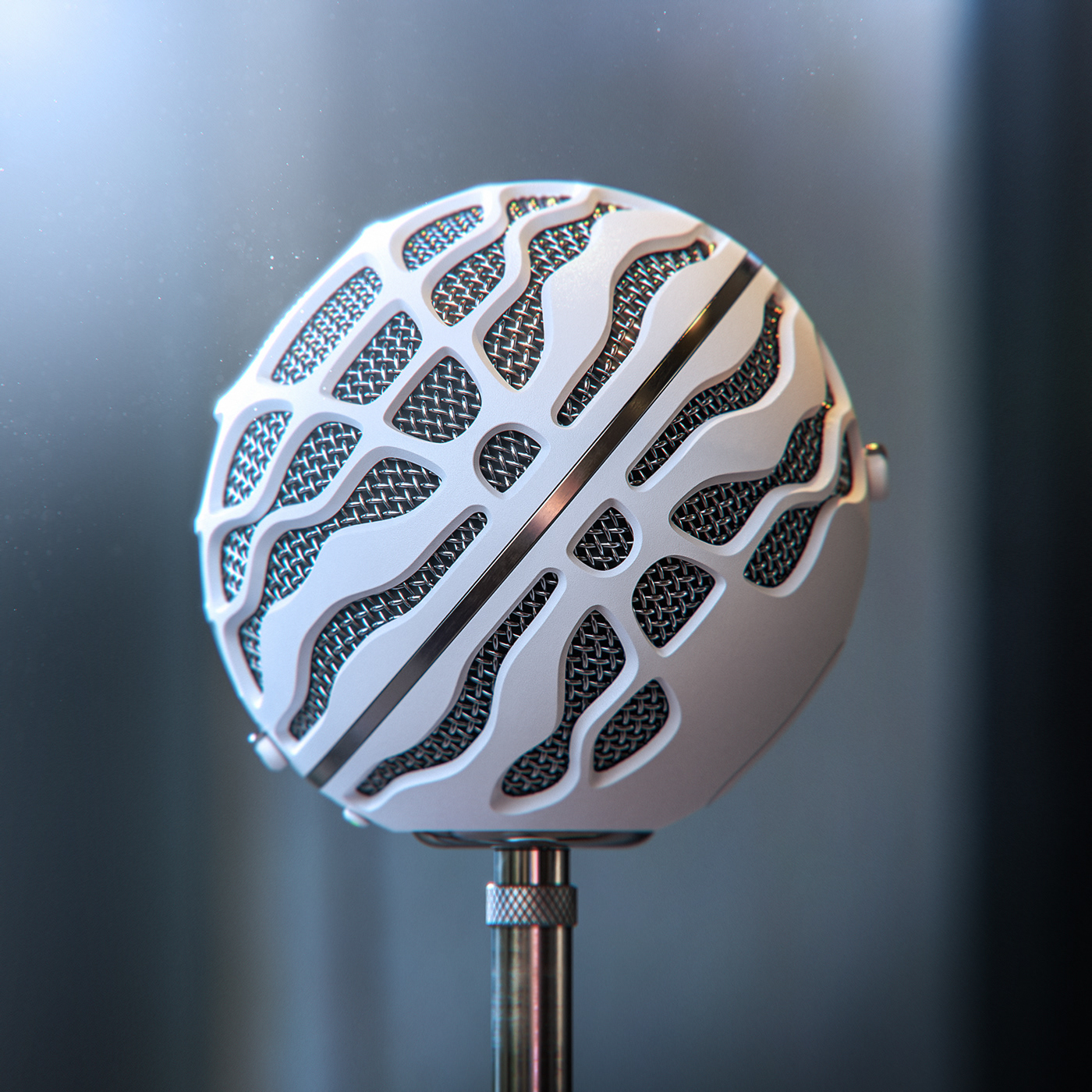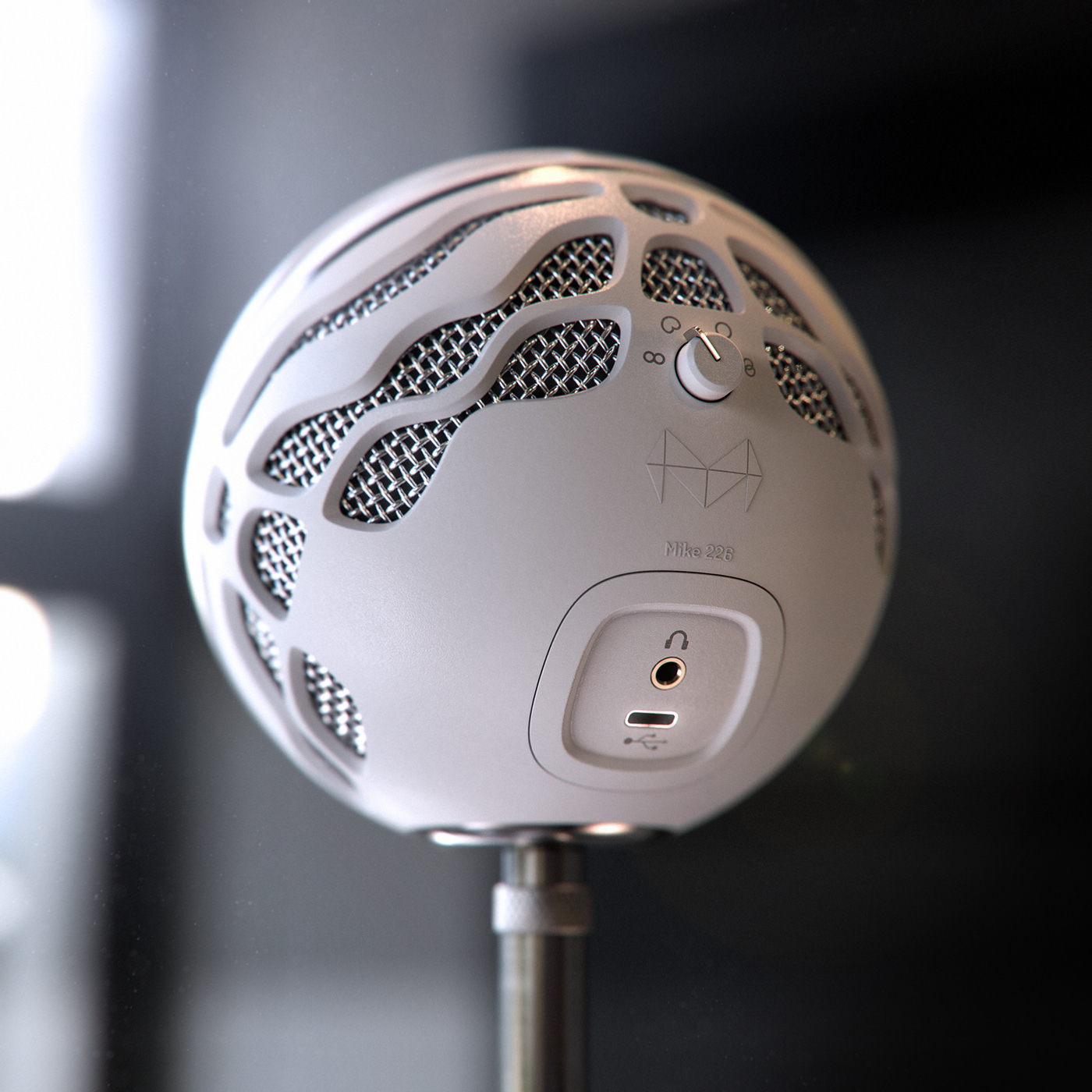
MIKE 226 // INTRODUCTION
A few months ago I was developing a technique to model a microphone grid mesh in a CAD format (NX). It was meant to support an industrial designer to elevate his visual presentation for a microphone concept he had designed at that time. The grid came out better than I expected, so I decided to design one for myself.
So, I started researching different forms of how sound could be visualized, when I stumbled upon a phenomenon known as cymatics. The phenomenon is a study of how vibrations creates waves in a substance. This could be with a non-Newtonian fluid on a speaker, or adding fine grains (sald/sand/etc) on a flat piece of surface and connecting vibrations/sound waves to it. In certain frequencies that resonates with the plate, the grains will move into regular patterns on the surface, some of which - in my opinion - are beautiful.

Image showing the phenomenon of cymatics with sand in action. Image courtesy of Nigel Stanford (www.nigelstanford.com)
On the webpage for Cymatics Group I came across a full study of different patterns, and how they will repeat only in a larger scale on different wavelengths. It was here I got the idea to utilize one of these patterns to design a microphone. Below you'll see a small selection of the frequencies I was looking at, and the selected pattern to be used for a further shape exploration.
CYMATICS // PATTERN SELECTION

From these patterns I found pattern from the wavelength of 226Hz to be a great fit for pursuing the microphone design. And it's this very frequency that gave the microphone it's name: Mike 226
The pattern was given a circular warp in photoshop, such that it could be traced and modeled into a spherical shape in NX, which stands as the essence of the shape exploration for this concept.






















